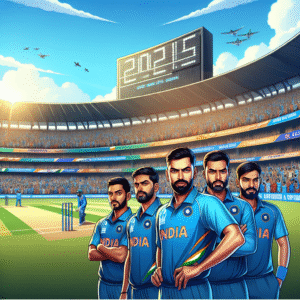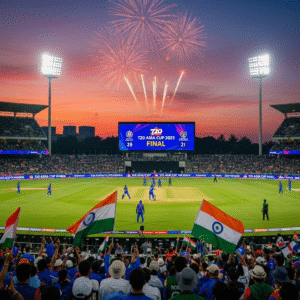Can India Defend Their Title at Asia Cup 2025
India’s prospects for defending their title at the Asia Cup 2025 present a complex and intriguing challenge, laden with opportunities and potential obstacles. The Asia Cup, a premier cricketing event in the continent, showcases some of the best talents from top cricketing nations. For India to retain their title, considerable planning, strategy, and execution will be necessary.
Recent performances at international levels suggest a spectrum of high expectations among fans and pundits. As a nation with a robust cricketing infrastructure and talent pool, India possesses the necessary tools to defend their title effectively. However, cricket being an inherently unpredictable game, India’s odds also depend on how well they can adapt to different conditions and rivals, alongside leveraging the experience and skill of their players.
Key to India’s defense strategy will be the current form and fitness levels of their star players. India’s batting lineup has traditionally been their strength. Stars like Virat Kohli, KL Rahul, and young sensation Shubman Gill have the ability to anchor the innings as well as accelerate the scoring rate when needed. Virat Kohli, celebrated for his ability to excel under pressure, remains a cornerstone of Indian cricket. His mastery in handling challenging situations, combined with his aggressive batting style, makes him a pivotal figure in India’s strategies.
Meanwhile, KL Rahul, known for his adaptability across formats, complements the top order with his technique and temperament. Shubman Gill, representing the new wave of Indian cricketers, has swiftly climbed the ranks with stellar performances and is a key player for the future.
India’s middle order, often considered the backbone of their batting lineup, consists of seasoned players such as Rishabh Pant and Hardik Pandya. Both are known for their match-winning capabilities and have often been the difference-makers in tight contests. Pant’s explosive batting style and quick reflexes as a wicketkeeper enrich the team composition, while Pandya’s all-round capabilities provide much-needed balance.
A significant aspect of India’s potential success at Asia Cup 2025 is their bowling attack. India’s current mix of pace and spin has proven effective in subcontinental conditions, where the Asia Cup will likely be held. Jasprit Bumrah, with his deadly yorkers and deceptive slower deliveries, remains India’s go-to bowler in crucial moments. His partnership with Mohammed Shami, known for his seam movements and disciplined line, forms a formidable pace-bowling attack.
Furthermore, the spin department, featuring Ravindra Jadeja and Kuldeep Yadav, offers strategic flexibility. Jadeja’s accurate bowling and fielding prowess are assets, while Kuldeep’s wrist spin adds an element of mystery. The variety in India’s bowling allows them to tailor their attack based on pitch conditions and opposition weaknesses.
The dynamic leadership under Rohit Sharma will also be a critical factor. Sharma’s ability to inspire the team and make strategic decisions has previously led India to significant victories. His understanding of player dynamics and ingenious use of resources ensures that India remains competitive against diverse opponents.
Preparation for the tournament will involve extensive conditioning and strategizing. The Indian team management is likely to focus on physical fitness, mental resilience, and fielding techniques—areas often scrutinized during high-stakes tournaments. Detailed match simulations and practice sessions geared toward specific opponent strategies are vital for honing player skills.
Additionally, India’s performance will be influenced by the international cricket calendar and the potential for player burnout. Managing workloads carefully forms a crucial part of ensuring top-notch performances when it matters most. Effective rotation policies and resting key players when necessary can prevent injuries and preserve energy levels for peak tournament periods.
External factors also play a role in India’s title defense. Competing teams like Pakistan, Sri Lanka, and Bangladesh continuously pose significant threats, each bringing unique challenges. Pakistan, with its experienced pace attack and aggressive batting, will test India’s resolve. Sri Lanka’s resilience and ability to punch above their weight can never be discounted, while Bangladesh’s recent improvements in international cricket make them an underdog with potential for upsets.
Adapting to different playing conditions across various venues in the host country is another hurdle India will navigate. Subcontinental pitches often feature unpredictable behaviors—turning tracks may prove testing, especially in day/night fixtures where dew can become a factor.
Tactical innovation might also emerge as a decisive factor. As cricket evolves, the strategic element becomes increasingly prominent. India’s flexibility in adapting strategies, such as utilizing powerplays effectively or deploying part-time bowlers to break partnerships, will strengthen their title defense efforts. Investing in data analytics to anticipate and exploit opposition weaknesses could offer an additional edge.
Fan support, an often understated dimension, will certainly boost India’s morale. Indian cricket followers are known for their passionate support, which can energize players and provide a psychological advantage. Filling stadiums with cheers and support can also pressurize opponents, creating an intimidating atmosphere.
In summary, defending the Asia Cup title in 2025 demands meticulous preparation, a blend of seasoned and youthful players, strategic innovation, and an adaptive mindset. By harnessing their strengths and overcoming potential hurdles, India can strive for another historic triumph, keeping their illustrious cricket legacy alive.













Post Comment